What's New
Displaying results 3171 - 3180 of 4052
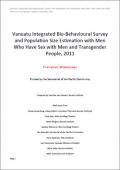
Resource | Publications,
The overall aim of the research was to fill gaps in information on HIV and STI prevalence and risk behaviours among MSM and TG in Vanuatu through Integrated Bio‐Behavioural Surveillance (IBBS) and support interventions in Vanuatu. The study was collaboration between the Burnet Institute, Wan Smolbag Theatre and the Vanuatu Ministry of Health. Three research objectives were identified:
1. To estimate the prevalence of chlamydia, gonorrhoea, syphilis and HIV among MSM and TG;
2. To describe knowledge, attitudes and risk behaviours among MSM and TG in Port Vila; and
3. To estimate population size of MSM and TG in Port Vila.
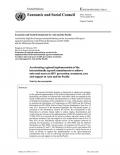
Resource | Publications,
The purpose of the present document is to outline a regional framework that can support Governments in accelerating and monitoring their national efforts towards universal access through regional cooperation, including the sharing of information, experiences and good practices related to the HIV and AIDS response.
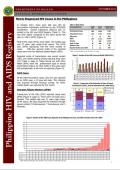
Resource | Fact Sheets,
In October 2011, there were 200 new HIV Ab seropositive individuals confirmed by the STD/AIDS Cooperative Central Laboratory (SACCL) and reported to the HIV and AIDS Registry (Table 1). This was 92% higher compared to the same period last year (n=104 in 2010) [Figure 1].
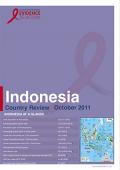
Resource | Reviews and Snapshots,
Since 1987, when the first case of HIV was reported, the rapidly increasing number of new HIV infections in Indonesia makes the epidemic one of the fastest growing in Asia. In 2009, an estimated 310,000 [200,000 - 460,000] adults and children were living with HIV of which an estimated 88,000 [58,000 - 130,000] were women 15 years and older.
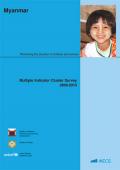
Resource | Publications,
Myanmar MICS 2009-2010 was conducted by the Planning Department, Department of Health Planning and the Department of Health. Its main objectives are to provide updated information for assessing the situation of children and women in Myanmar; to furnish data needed for monitoring progress towards the Millennium Development Goals and other internationally agreed goals; and to contribute to the improvement of data collection and monitoring systems in Myanmar.
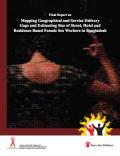
Resource | Publications,
HIV and AIDS as a public health threat do not require rational for continued worldwide attention. Complicated disease transmission cycle, complex human interaction and paucity of reliable data have positioned the issue as primary health concern across the globe. Periodic global data on HIV and AIDS prevalence, incidence and people living with the disease has reported a decline which is primarily attributable to the reduction in incidence.
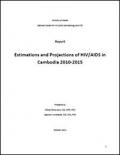
Resource | Publications,
The HIV/AIDS epidemic in Cambodia has been moving into its 20th year after the first case of HIV was identified in 1991. The Royal government of Cambodia, with the financial and technical support from developing partners and civil societies, has actively responded in order to contain the spread of the epidemic. Consequently, the country has successfully brought the HIV prevalence among the general population down to about 0.9% in 2006. And it is also projected that the HIV prevalence will remain stable till 2012 with the prevalence around 0.6%.
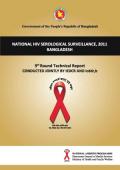
Resource | Publications,
The findings in this report are in general very encouraging as it shows that the overall prevalence of HIV in populations most at risk remains below 1% and most importantly, HIV prevalence has declined among people who inject drugs in Dhaka from 7% to 5.3%. Moreover, hepatitis C has also decline which is a marker for unsafe injecting practices. Thus, the data suggest that our intervention programmes are having a positive effect. Overall the most number of HIV positive people, irrespective of population groups, were in Dhaka despite the decline in the proportion of HIV positives among people who inject drugs.
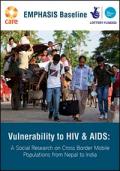
Resource | Publications,
In Nepal, people in low economic brackets with minimal productive means are influenced by the political instability and are likely to migrate. The Nepal Living Standard Survey conducted by the Central Bureau of Statistics in 2003/04 has estimated that one million Nepalese work in India mostly as unskilled permanent or seasonal laborers and domestic workers. According to The Peace and Friendship Treaty signed between India and Nepal in 1950, citizens of both countries can travel and work freely across the border and are to be treated the same as native citizens – except for voting rights. Cross border migrants, due to poverty, lack of legal protection, poor access to services, discrimination and exploitation face many vulnerabilities, particularly related to HIV & AIDS. Data from studies in Nepal estimate that 46% of HIV cases in Nepal were among seasonal migrants to India.
This report presents the findings of a baseline study carried out in India and Nepal for CARE's Enhancing Mobile Population’s Access to HIV & AIDS Services, Information and Support (EMPHASIS) program. This program seeks to reduce the vulnerability of mobile populations to HIV & AIDS along two mobility routes between Bangladesh and India and Nepal and India. The objectives of this study were to understand the vulnerabilities faced by mobile populations by exploring the volume, pattern and drivers of mobility.
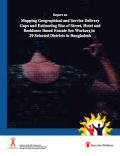
Resource | Publications,
This mapping exercise was mainly carried out to identify the services delivery gaps of HIV intervention programs currently operating with street based and hotel/residence based female sex workers (FSW) and also to estimate size of the unserved sex workers in street, hotel and residence settings in 29 districts of Dhaka, Chittagong and Khulna divisions to scale up the HIV essential services and as part of it locations for setting up of DICs can be determined.





